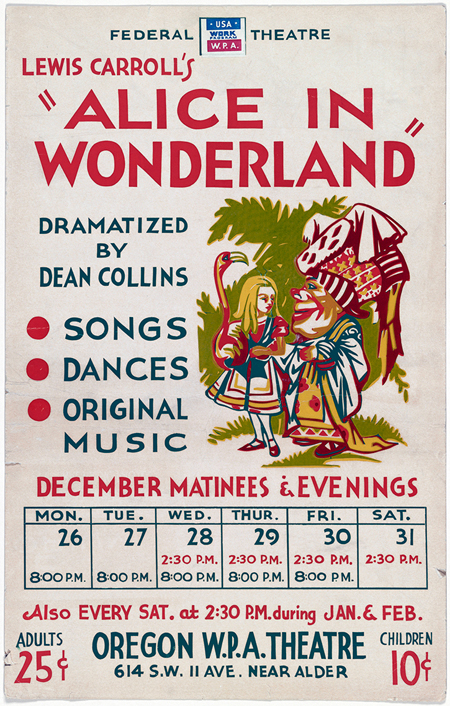Literature Links: Alice in Wonderland
Find out some intriguing ways to connect to one of the most beloved stories of all times with various primary sources.
The Immigrant Experience: Down the Rabbit Hole Library of Congress
Relocating to a new country can be a disorienting experience. Immigrants often find themselves in a strange new world where the rules have changed, the surroundings are unfamiliar, and the inhabitants speak in strange tongues. In some ways, the immigrant experience is like the dizzying journey taken by the lead character in Lewis Carroll’s 19th-century novel Alice’s Adventures in Wonderland. In this lesson, students will use class discussions of students’ experiences, the first-hand accounts of immigrants, and other primary source documents and images from the collections of the Library of Congress to uncover the common themes of the immigrant experience.
For related resources, take a look at Primary Source Spotlight: Immigration.
Comparing the original work to adaptations
Take a quick look at the following three adaptations. Who do you think were the audiences for these adaptations? How do you know? How might these adaptations proved useful to these different audiences?
- Alice’s Adventures in Wonderland by Lewis Carroll 1928 edition digitized for online reading
- Alice’s Adventures in Wonderland retold in words of one syllable by Mrs. J.C. Gorham 1905 (.pdf)
- “Alice in Wonderland” condensation by Newton Newkirk published in The Washington Herald. (Washington, D.C.), 15 Sept. 1919
Compare and contrast similar parts of Carroll’s book and Gorham’s edition. How are they similar? How are they different?
How else might you adapt Carroll’s story?
Comparing theatrical adaptations
Compare and contrast these plays adapted from Carroll’s book. In what ways did the authors manipulate the texts to suit their purpose? Which play did you find most true to the original text? Which play would you most enjoying seeing performed? Why?
- Alice in Wonderland : a play : compiled from Lewis Carroll’s stories Alice in Wonderland and Through the looking-glass and what Alice found there by Emily Prime Delafield 1898
- A dramatization of Lewis Carroll’s “Alice’s adventures in Wonderland” and “Through the looking glass” by Alice Gerstenberg 1915
Comparing characters
Compare and contrast this 1999 political cartoon by Herb Block with this 1928 Mad Hatter tea party illustration by John Tenniel it emulates. What similarities and differences do you notice? What can you guess about the three characters other than Alice in the cartoon?
Now read the cartoon’s bibliographic record and the curator’s note (second from top). Then read the article “What the Reform Party Signifies” published Oct. 26, 1999 in the Christian Science Monitor. Finally, read the chapter “A Mad Tea Party“. Describe new insights into the Herb Block cartoon and it’s relation to Carroll’s Mad Hatter tea party that you now have; be sure to use evidence from the sources to support your writing.
Related resource

